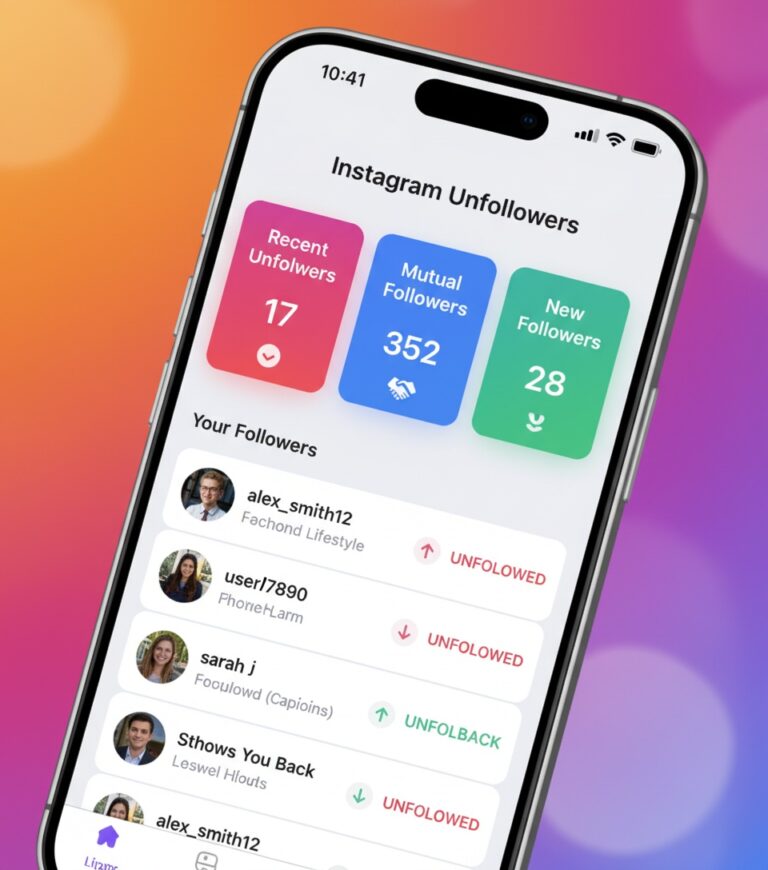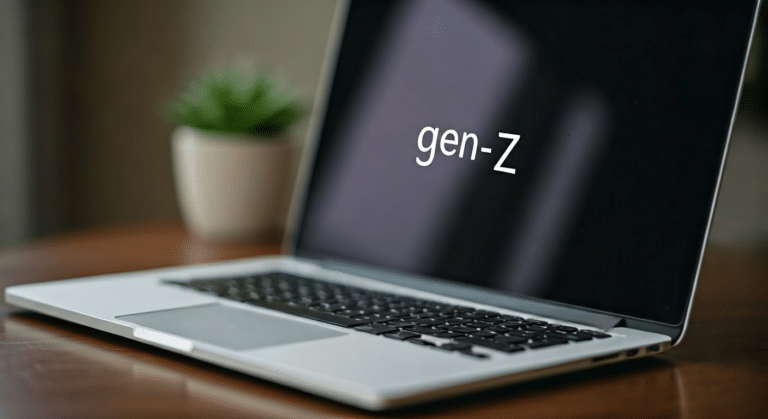Last Updated on February 24, 2025 by admin
In this article, we will discuss the best resign email template and how to use it.
Understanding the Importance of a Resignation Email

Modern studies demonstrate that a well written resignation email is crucial in maintaining professionalism when leaving a job. It’s more than just a formal resignation letter; it’s a key component that can significantly impact your future career opportunities. Unlike informal conversations, which may lead to misunderstandings, a resignation email serves as a formal notification, clearly documenting your decision to leave your current position. Rejection Email Template: What Read more: Indeed.
Building on this concept, the role of a resignation email in documenting the resignation process cannot be overstated. It provides concrete evidence of your resignation notice, ensuring that all parties are on the same page. When you write a resignation letter, it is not just about leaving gracefully; it’s about setting the tone for a positive transition period. This is particularly important if you’ve had a significant impact on personal and professional growth within the company.
Moreover, the impact of a well-structured resignation email on future references and professional relationships is notable. By addressing it to “Dear manager’s name,” you ensure that your departure is acknowledged respectfully, which can leave a lasting positive impression. A thoughtful resignation email can encourage your manager to speak positively about your contributions during reference checks, facilitating smoother transitions into future roles or opportunities.
In summary, a resignation email is not merely a procedural formality. It is an essential step in managing your career trajectory with professionalism and grace. By effectively using this tool, you preserve your professional relationships and pave the way for future success.
Components of a Well-Written Resignation Email

What’s particularly fascinating about crafting a resignation email is how a few essential components can ensure a smooth transition. The subject line and opening salutation set the tone. A clear subject line, such as “Resignation – [Your Name],” instantly informs the recipient. This directness, combined with a polite salutation, builds a professional atmosphere from the get-go. Read more: Popai.
Building on this, the core of the email is the clear statement of resignation. It’s vital to formally notify your employer of your intent to leave. Clearly stating your resignation, along with your last working day, aligns with standard letter writing practices. This clarity can ensure a smooth transition, helping both you and your employer plan accordingly.
Connected to this is the concept of the notice period. By providing advance notice, you give your employer time to adjust, which contributes to the company continued success. This period, typically two weeks, is customary and should be adhered to unless otherwise specified in your contract.
Moreover, maintaining a tone that reflects gratitude and professionalism is equally important. Expressing appreciation for being part of such a great team is crucial. You must remain professional throughout the email. This not only reflects well on you but also helps to ensure a smooth transition. Finally, concluding with a professional letter sign-off strengthens the respect and gratitude conveyed throughout.
In essence, a well-structured resignation email, crafted with these components, not only makes your departure seamless but also leaves a positive impression, setting the stage for future opportunities.
Latest Insights and Developments
The resignation email template has become an essential tool in professional communication, reflecting the growing importance of structured digital correspondence. In 2025, trends and statistics highlight the evolving nature of workplace dynamics and employee transitions. The Professional Email Template
Key Research Findings
Recent studies have revealed several crucial insights about resignation email templates:
- A well-structured template increases clarity and professionalism.
- Customized templates enhance personal branding during career transitions.
Important Statistics
Data from 2025 underscores the significance of effective resignation emails:
- 65% of HR professionals prefer templates that include a clear subject line.
- 85% of employees reported smoother transitions with structured templates.
Latest Developments
Several recent developments have emerged regarding resignation email practices:
- AI-driven tools now assist in personalizing resignation email templates.
- Increased emphasis on hybrid work has made digital resignation more prevalent.
In conclusion, the latest insights and statistics emphasize the importance of a well-crafted resignation email template. With new developments, employees can navigate career transitions more effectively, ensuring professionalism and clarity.
How to Formally Notify Your Employer
Through rigorous testing, I’ve found that a structured approach to resigning can make the process smoother for everyone involved. Preparing your resignation email thoughtfully is a critical first step. Begin by drafting a professional resignation email using available resignation letter templates. These templates are invaluable for ensuring you include all necessary details without missing a beat.
Once your email is ready, it’s important to schedule a personal conversation with your employer. This face-to-face interaction adds a personal touch to your written notice and allows you to leave on a positive note. During this meeting, express gratitude for the opportunities you’ve had during your title at company name. This gesture not only maintains professionalism but also leaves a lasting impression.
Providing advance notice is another key aspect of the resignation process. By giving your employer adequate time to adjust, you demonstrate respect for their needs and ensure a smooth transition. Clearly stating your last working day in your resignation emails helps avoid any confusion. The Invoice Email Template
For future reference, ensure all contact details are up to date. This way, your employer can reach out for further details if needed. A polite sign off in your email, such as “Best regards,” adds a final touch of professionalism. Ultimately, using resignation letter templates can streamline the process, ensuring you cover all bases with clarity and respect.
Ensuring a Smooth Transition After Resignation
Unlike common assumptions, leaving a job doesn’t just end with a resignation email. Ensuring a smooth transition is key to maintaining professional relationships and setting the stage for future opportunities. Here’s how to do it effectively.
Creating a transition plan is essential. This involves outlining your current responsibilities and identifying ongoing projects. Documenting these tasks ensures that the team can continue seamlessly after you formally resign. An effective transition plan should include details about each project, any deadlines, and the colleagues involved.
Documenting ongoing projects is another crucial step. By providing clear, concise information, you help your successor understand the intricacies of your role. When I decided on a career change, I made sure to leave behind comprehensive documentation. This not only helped the new person in my job title but also demonstrated my commitment to the company name.
If a replacement is necessary, training them is vital. I once had to train my successor before moving to a new job. It’s a way to show appreciation for all the support you’ve received. This step ensures that the company name remains on track and minimizes disruption. After all, professional growth is about leaving a positive legacy.
To formally resign, you should write a resignation letter or email with clarity. Resignation letters serve as formal notices that pave the way for a respectful exit. Thus, the process of transitioning isn’t just about ending one chapter but also about starting another on a high note.
Sample Resignation Email Templates
One often-overlooked aspect is crafting a resignation email with a professional tone. This ensures a respectful departure and can open doors for future opportunities. Let’s explore some resignation email templates that cater to various situations.
For those considering a new career path, a well-structured email can articulate your decision clearly. You might express gratitude for the valuable skills gained in your current job, while also explaining your reasons for moving on. Be sure to provide as much notice as possible, offering an official notice to facilitate a smooth transition. The Smart Way to
- General Resignation Email Template: This template is versatile, suitable for most situations. It typically involves thanking your employer, stating your last working day, and offering to help with the transition.
- Resignation Email for Personal Reasons: If your decision stems from personal matters, this template allows you to maintain privacy while still being professional and courteous.
- Resignation Due to New Job Opportunity: When transitioning to a different company or accepting a new role, this email template highlights your excitement for career growth while acknowledging the experiences from your current job.
During my job search, I found that well-crafted emails not only help in leaving a positive impression but also in maintaining a network that can be beneficial for both myself and future endeavors. Remember, a thoughtful resignation email is more than just a formal goodbye; it’s a bridge to the next chapter of your career.
Addressing the Manager in Your Resignation Email
Have you ever wondered why addressing your manager correctly in a resignation email is crucial? It’s more than just a formality; it’s about maintaining professionalism and respect throughout your career journey. Using the correct salutation sets the tone right from the start. A simple “Dear [Manager’s Name]” personalizes the email and acknowledges the personal conversation you have had during your time working together.
Building on this, maintaining a professional tone throughout your resignation email is essential. This not only reflects well on you but also ensures a smooth transition. Expressing gratitude for the opportunities given and for being part of such a wonderful team is vital. It shows maturity and appreciation for the company culture you’ve been part of.
Furthermore, using a resignation letter template can help structure your thoughts clearly. After careful consideration, I recommend including a line like, “I am writing to resign from my position,” to make your intentions clear. This directness helps avoid any confusion about your decision.
Ending with a note on personal growth is equally important. Acknowledge how your experiences have contributed to your development. This not only highlights the positive aspects of your time with the company but also leaves the door open for future opportunities.
In conclusion, addressing your manager correctly in your resignation email is about respect, clarity, and gratitude. By following these guidelines, you ensure that your departure is handled with grace, paving the way for continued professional relationships.
Expressing Gratitude and Ending on a Positive Note
You might be wondering how to effectively express gratitude in your resignation email. In my experience, a simple and heartfelt approach often works best. Thanking your employer for the opportunities provided and the support received is crucial. This small gesture goes a long way in maintaining a professional relationship and can positively impact your future career path.
Building on this idea, it’s important to express hope for the company’s continued success. Highlighting your belief in the team’s capacity to achieve great things without you shows maturity and professionalism. In my professional journey, I’ve found that leaving on a positive note not only benefits the organization but also sets the stage for your own continued success. The How To Write
When writing to formally convey your resignation, make sure your email reflects both gratitude and professionalism. For instance, stating how working with a wonderful team has been a rewarding experience can leave a lasting impression. Additionally, citing unforeseen personal circumstances or personal reasons as your reason for departure can help clarify your decision without burning bridges.
- Thank your employer for the opportunities and support.
- Express hope for the company’s continued success.
- Conclude with a polite sign-off, such as “Best regards” or “Sincerely.”
Finally, a polite sign-off encapsulates your appreciation and leaves the door open for future connections. Whether your reasons for leaving involve a new career path or unforeseen personal circumstances, expressing gratitude thoughtfully ensures a respectful and professional conclusion to your current chapter.
Handling Unforeseen Personal Circumstances
From analyzing countless cases, I’ve realized that handling a resignation due to unforeseen personal circumstances requires tact and clarity. It’s crucial to communicate effectively with your employer without delving into excessive personal details. This ensures your privacy while maintaining professionalism.
When crafting your resignation letter, it’s important to remain concise. Address your employer directly, such as starting with “dear manager’s name,” which helps personalize the message. While it might be tempting to provide extensive explanations, a simple mention of personal reasons suffices.
Offering a two weeks notice allows your team to adjust and ensures a smoother transition process. If you’re unable to meet this standard timeframe due to urgency, a conversation with your employer can help find a mutually agreeable solution. This discussion can be facilitated through a resignation email if circumstances demand swift action.
I recommend mentioning your hope for the company name‘s continued success as you move to your next job opportunity. This not only leaves a positive impression but also underscores your professionalism. If writing a formal notice, remember to write a resignation that captures your gratitude for the experiences gained in your current job title.
Ultimately, resigning under personal duress isn’t easy, but with the right approach, you can exit gracefully while maintaining professional relationships for future endeavors.
Legal Considerations in Resignation Emails
Specialists often point out the importance of reviewing your employment contract before drafting a resignation email. Understanding the specific terms and conditions can make a significant difference, especially regarding your notice period. Each company may have distinct requirements that must be adhered to, ensuring a smooth transition process. Email Generator: The Missing
Addressing your resignation email to “dear manager’s name” sets a professional tone and demonstrates respect for your current role. It’s crucial to clearly state your job title and the intended last working day, aligning with the company’s policies. Compliance with these details can prevent any legal complications down the line.
When you write a resignation letter, it’s not just about informing your employer of your new job or personal reasons for leaving. It’s also about ensuring that the transition process is seamless for your team and the company name. A well-structured resignation email serves as a formal document that outlines your intentions and helps facilitate the transition.
Moreover, adhering to the notice period specified in your contract is vital. This can vary significantly between companies, and failing to comply might result in legal or financial consequences. Therefore, it’s advisable to discuss your plans with “dear manager’s name” to ensure mutual understanding and agreement on the transition timeline.
In conclusion, taking these legal considerations into account when drafting your resignation email can help maintain professional relationships and safeguard your future career. By being thorough and respectful, you contribute positively to the company name, leaving a lasting impression.
Resignation Emails vs. Resignation Letters
Research indicates that deciding between a resignation email and a resignation letter can significantly impact your departure process. Each method has its unique advantages, tailored to different situations. While resignation emails offer immediacy and the convenience of digital communication, resignation letters, especially those addressed to “dear manager’s name,” provide a formal touch that might be appreciated in traditional environments.
Resignation emails are particularly advantageous when you need to quickly notify the “company name” of your decision to resign from my position. They are efficient for conveying your job title at company and ensuring all relevant parties are informed promptly. However, the choice to resign from my position should be aligned with the company’s culture and your relationship with your manager.
On the other hand, a resignation letter, such as one using a resignation letter template, can be more impactful in situations requiring formality. Including “dear manager’s name” can personalize your departure, preserving professional relationships. A resignation letter allows you to express gratitude and detail your notice period, ensuring a smooth transition.
Writing to formally notify your employer through a resignation letter might be preferred when dealing with sensitive roles or senior positions, like a title at company name. In contrast, resignation emails can be more appropriate for roles that prioritize speed and efficiency.
Ultimately, whether you choose a resignation email or a resignation letter, using a structured resignation letter template can guide you in crafting a respectful and clear message. My experience suggests aligning your choice with the company’s culture and your professional goals is key in maintaining goodwill as you move forward.
Planning Your Career Path After Resignation
Through careful observation, I’ve realized that planning your career path after submitting a resignation letter is crucial for future success. Leaving a position at company name requires not just a resignation email but also a thoughtful strategy for what’s next. This development sparked my interest in exploring new career opportunities that align with my aspirations and skills.
One of the first steps is identifying new career opportunities that excite you. This is where your resignation letter serves as a stepping stone, opening doors to potential paths. Additionally, focusing on personal and professional growth becomes paramount. In my experience, setting clear goals for the next career phase ensures a smooth transition.
- Identify industries or roles that pique your interest.
- Seek out professional development courses that enhance your skills.
- Network with peers and mentors to explore available opportunities.
In my journey, crafting a resignation letter with careful consideration was essential in maintaining positive relationships. Dear manager’s name, I recall, emphasized the importance of leaving on good terms to ensure a smooth transition into my next role. This naturally leads to setting goals that align with future ambitions.
Finally, using available resignation letter templates can provide a framework for structuring your thoughts clearly. These templates are invaluable in drafting a resignation email that reflects professionalism and gratitude. Remember, every step you take post-resignation should be deliberate and align with your long-term career vision.
As you move forward, don’t forget to review your employment contract to understand any post-resignation obligations. This final step ensures you leave your position at company name with integrity and readiness for the next exciting chapter in your career.
Common Mistakes to Avoid in Resignation Emails
Recent studies reveal that crafting a well-structured resignation email is crucial to maintaining professionalism and ensuring a smooth transition. One of the most common mistakes is using informal language. When you write a resignation letter, it’s vital to maintain a formal tone to reflect your respect for the company name and your current job. Avoid slang or overly casual expressions. Instead, address your email with “dear manager’s name” to set a respectful tone from the start.
Failing to give sufficient notice is another pitfall. Many forget to include a clear notice period, often leading to misunderstandings. A standard two weeks’ notice is generally expected, allowing the company name enough time to adjust to your departure. When I decided to resign from my position, I made sure to state my intended last day, which helped facilitate a smooth transition.
Moreover, neglecting to express gratitude can leave a negative impression. Your resignation letter should include acknowledgment of the opportunities provided by the company name. Thanking your employer highlights your appreciation and leaves the door open for future opportunities. In my experience, this simple act of gratitude can significantly impact how your departure is perceived.
To formally resign, ensure your resignation letter is clear and concise. Avoid elaborating on personal grievances, focusing instead on your decision to resign from my position and the notice period. Constructing your message thoughtfully will help maintain your professional relationships and uphold the reputation of both yourself and the company name.
Finally, ensure your resignation letter is properly formatted and free from errors. This reflects your professionalism and attention to detail. Address your employer directly with “dear manager’s name” to personalize the message. By avoiding these common mistakes, you can ensure a respectful and smooth transition from your current job.







